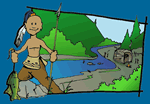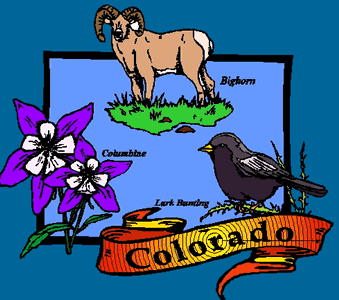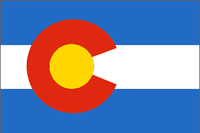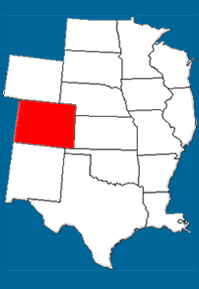


Geography and Landforms:
Colorado is located in the center of the western half of the continental United States and is the eighth largest state. Its average elevation of 6,800 feet is the highest of any state in the nation.
|
 History:
Spanish explorers were the first Europeans to enter the region that is now Colorado. In the 16th century they came to the area to search for the wealthy Seven Cities of Cibola. After failing to find the legendary gold, they left without establishing any settlements.
|
 Economy:
Historically, mining was the primary economic activity within the state of Colorado. Gold was first discovered here in 1858. Later, deposits of lead and silver were found. While gold is no longer extensively mined, oil, molybdenum (a mineral that makes steel hard and tough), and coal are important products to the state's economy.
|
 First Inhabitants:
The earliest inhabitants of Colorado were known as the Basket Makers. They arrived in the region around 1500 BC and were primarily nomadic hunters. The Basket Makers developed a sophisticated practice of basket making, and they created waterproof containers by covering baskets with clay and baking them.
|
Books Related To ColoradoThe Secret School - NA Avi The Twelve Days of Christmas in Colorado - Linda Ashman Bear Dancer: The Story of a Ute Girl - Thelma Hatch Wyss Beardance - Will Hobbs C is for Centennial: A Colorado Alphabet - Louise Doak Whitney Finding My Place - Traci Jones The Good Dog - Avi Hard Gold: The Colorado Gold Rush of 1859 - NA Avi Thanks to Nicki - Ann Howard Creel Whistler in the Dark - Kathleen Ernst The White Gates - Bonnie Ramthun |
Famous Citizens:
|
| Capital: | Denver |
| Entered Union: | August 1, 1876 |
| Population: | 5,355,866 |
| Area | 104,094 |
| Bird | Lark Bunting |
| Flower | Rocky Mountain Columbine |
| Nickname: | Centennial State, Colorful Colorado |
| Governor | John Hickenlooper |
Places to Visit in Colorado: (Click the links to learn more.)
|



